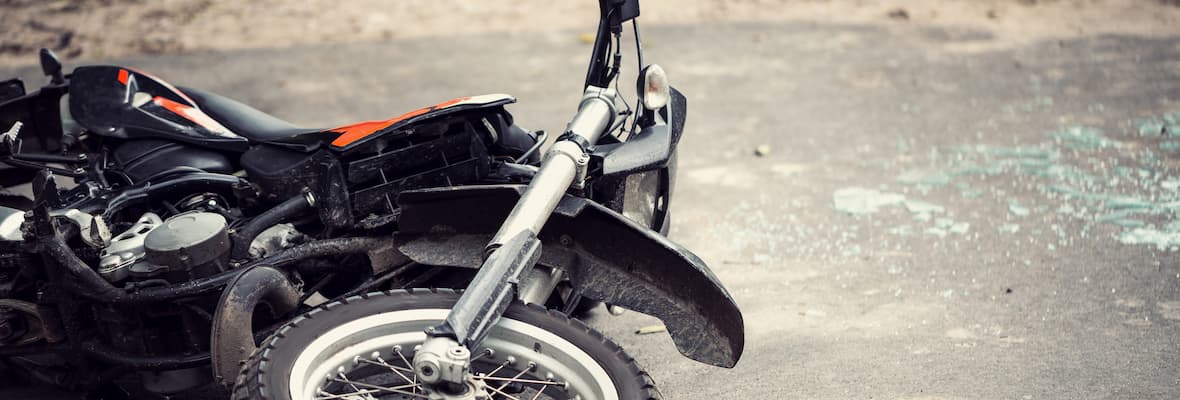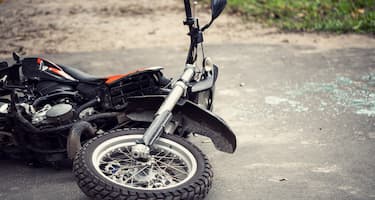View the latest statistics on motorcycle accidents, as well as Australian perceptions of motorcycle safety in Budget Direct’s latest survey.
17 November | See disclaimer
Quick facts
- Only 36% of surveyed Australians know the difference between lane splitting and filtering
- 63% of motorcyclists surveyed believe that motorists should be more tolerant of motorcyclists
- Government data revealed that Brisbane had more motorcycle fatalities between 2011-2020 than any other LGA in Australia
- 31% of Australians in our survey believe that motorcycles can evade police radars/cameras.
While motorcycle fatalities have been trending downwards in recent years, a lack of understanding from motorists continues to impact riders’ safety and increase their risk while on the road.
To help understand the impact of motorcycle accidents as well as Australians perceptions of motorcycle safety, we have compiled the latest laws, government statistics, and our survey data to bring you:
- 1.0. Australian motorcycle laws
- 2.0. Government-sourced motorcycle fatality statistics
- 3.0. Motorcycle misconceptions survey results
- 3.1. Do you own a motorcycle?
- 3.2. Do you know the difference between lane splitting and filtering?
- 3.3. Do you think motorcyclists can avoid police radars/cameras (e.g speed cameras)?
- 3.4. Where do you think most motorcycle accidents occur
- 3.5. Which of the following Personal Protective Equipment do you think is legally required for motorcyclists to wear?
- 3.6. Which age group do you think are most at risk of having a motorcycle accident?
- 3.7. Do you think motorists need to be more tolerant of motorcyclists?
- 3.8. What frustrates you the most about motorcyclists?
1.0. Australian motorcycle laws
1.1. Protective gear requirements
In Australia, motorcyclists, and their passengers (including sidecar passengers) are required to wear an approved helmet that complies with Australian (AS1698 or AS/NZ1698) or European standards (UN ECE 22.05 or 22.06), with a label or mark on the outside of the helmet indicating compliance with the standard.[1]
Helmet visors and goggles are the only forms of adequate protection from the weather, insects, and stones thrown up by other vehicles. Under Australian standard (AS1609), all visors and goggles should be shatterproof, equipped with clear lenses for use at night, and clean and unscratched.[2]
In Queensland, the Government recommends that motorcycle jackets, gloves, pants, and boots should all conform to European Standards and carry a ‘CE’ symbol. However, they are not legal requirements.[1]
1.2. Guide to lane filtering and splitting
Lane filtering
Lane filtering is when a motorcycle rider moves past stationary or slow-moving vehicles safely at a speed of 30km/h or less.
Lane splitting
Lane splitting is when a rider moves past vehicles at an unsafe speed of more than 30km/h.
Read our guide on Motorcycle lane filtering to learn more.
2.0. Government-sourced motorcycle fatality statistics
The Australian Government has released detailed accounts of all motorcycle fatalities from 2011 until the end of 2020.[3]
2.1. Motorcycle fatalities in Australia
From 2011-2020 there has been a total of 2081 motorcycle fatalities in Australia. While this number has been trending downwards over the last decade, further initiatives are required to reduce the number of motorcycle fatalities overall.
2.2 Motorcycle fatalities per road type (2016-2020)
Here’s the purpose of each road type:
- Local Road – A street primarily used to provide direct access to adjoining land.
- Arterial Road – A high-capacity urban road or main road. The primary function of an arterial road is to deliver traffic from collector roads to freeways and between main centres.
- Sub-arterial Road – These roads carry traffic between industrial, commercial, and residential areas.
- National or State Highway – These are usually roads that are either numbered or maintained by a sub-national state or province. State highways connect regions within the state whereas national highways connect states within Australia.
- Collector Road – Also known as a distributor road, this is a low-to-moderate capacity road that serves to move traffic from local streets to main roads.
- Undermined – A road that is destroyed at its base or foundations.
- Pedestrian Thoroughfare – An open walking space only used by pedestrians and no other forms of traffic including cars, cycles, and scooters.
2.3. Motorcycle fatalities per age group
| 2011 | 2012 | 2013 | 2014 | 2015 | 2016 | 2017 | 2018 | 2019 | 2020 | |
|---|---|---|---|---|---|---|---|---|---|---|
| 0-16 | 5 | 6 | 4 | 2 | 3 | 6 | 3 | 2 | 2 | 3 |
| 17-25 | 47 | 43 | 38 | 41 | 33 | 46 | 43 | 28 | 43 | 29 |
| 26-39 | 55 | 70 | 64 | 57 | 60 | 63 | 48 | 57 | 56 | 60 |
| 40-64 | 85 | 95 | 84 | 79 | 95 | 119 | 93 | 82 | 88 | 84 |
| 65-74 | 6 | 8 | 17 | 8 | 11 | 11 | 20 | 20 | 18 | 8 |
| 75+ | 4 | 1 | 6 | 4 | 1 | 4 | 4 | 2 | 3 | 4 |
The 40–64-year-old age group had the highest number of fatalities, peaking in 2016 with 119 motorcycle fatalities in one year. Motorcycle crashes involving riders over 40 are more likely to occur in non-urban or regional locations where there are higher levels of leisure or recreation.[4]
2.4. Motorcycle fatalities per state
| 2011 | 2012 | 2013 | 2014 | 2015 | 2016 | 2017 | 2018 | 2019 | 2020 | |
|---|---|---|---|---|---|---|---|---|---|---|
| NSW | 51 | 61 | 71 | 59 | 67 | 67 | 59 | 54 | 68 | 68 |
| Qld | 45 | 60 | 45 | 37 | 54 | 62 | 50 | 43 | 45 | 54 |
| Vic | 49 | 41 | 41 | 30 | 30 | 56 | 38 | 38 | 43 | 26 |
| WA | 28 | 34 | 25 | 43 | 21 | 39 | 25 | 28 | 27 | 26 |
| SA | 21 | 15 | 12 | 11 | 11 | 8 | 24 | 10 | 17 | 19 |
| Tas | 3 | 5 | 11 | 3 | 10 | 10 | 11 | 8 | 7 | 6 |
New South Wales consistently experienced the highest number of motorcycle fatalities out of all states from 2011-2020.
2.5. Highest 10 LGAs for motorcycle fatalities in Australia (2011-20)
| Rank | LGA | Fatalities |
|---|---|---|
| 1st | Brisbane (Qld) | 18 |
| 2nd | Moreton Bay (QLD) | 15 |
| 3rd | Singleton (NSW) | 15 |
| 4th | Logan (QLD) | 13 |
| 4th | Tweed (NSW) | 13 |
| 5th | Liverpool (NSW) | 12 |
| 6th | Lake Macquarie (NSW) | 11 |
| 6th | Yarra Ranges (Vic) | 11 |
| 7th | Joondalup (SA) | 10 |
| 7th | Salisbury (SA) | 10 |
| 7th | Tamworth Regional (NSW) | 10 |
| 7th | Unincorporated ACT (ACT) | 10 |
Nearly 60% of these LGAs are located in regional areas. This is consistent with the highest number of fatalities by age (40-64) being most likely to occur in regional areas.[4]
As the highest-ranking LGA, Brisbane is a high-risk area for vulnerable riders. As a metropolitan area riders under 40 are more likely to experience motorcycle fatalities due to higher levels of daily commuting.[4]



